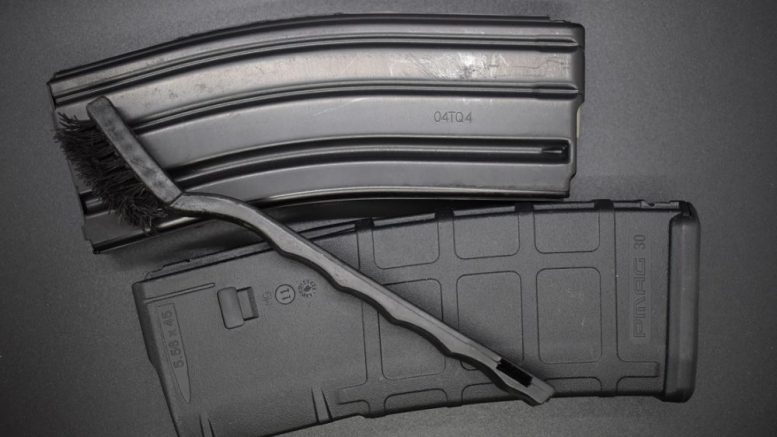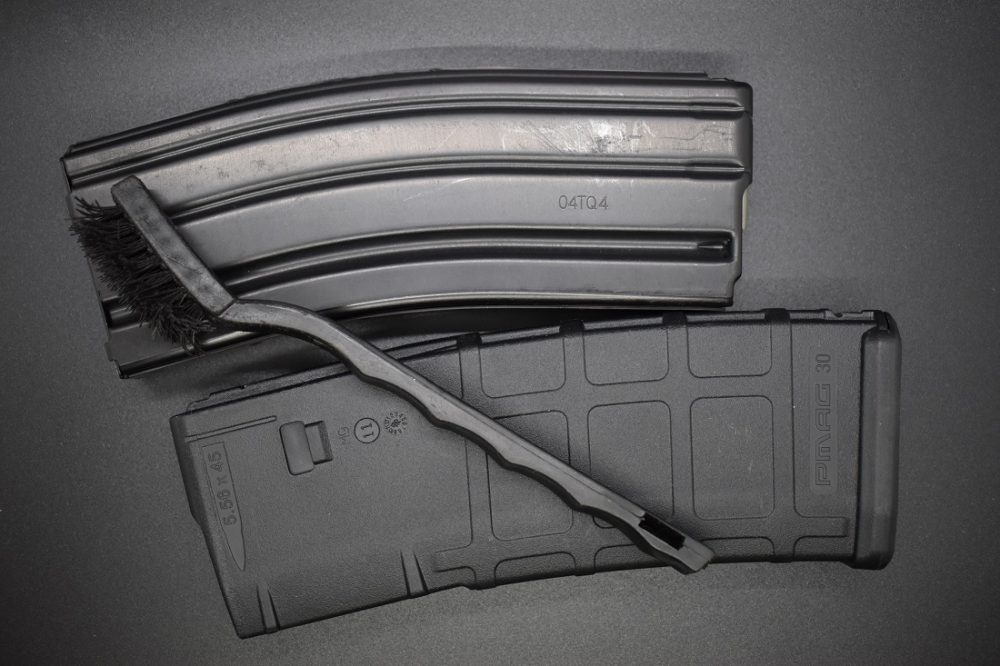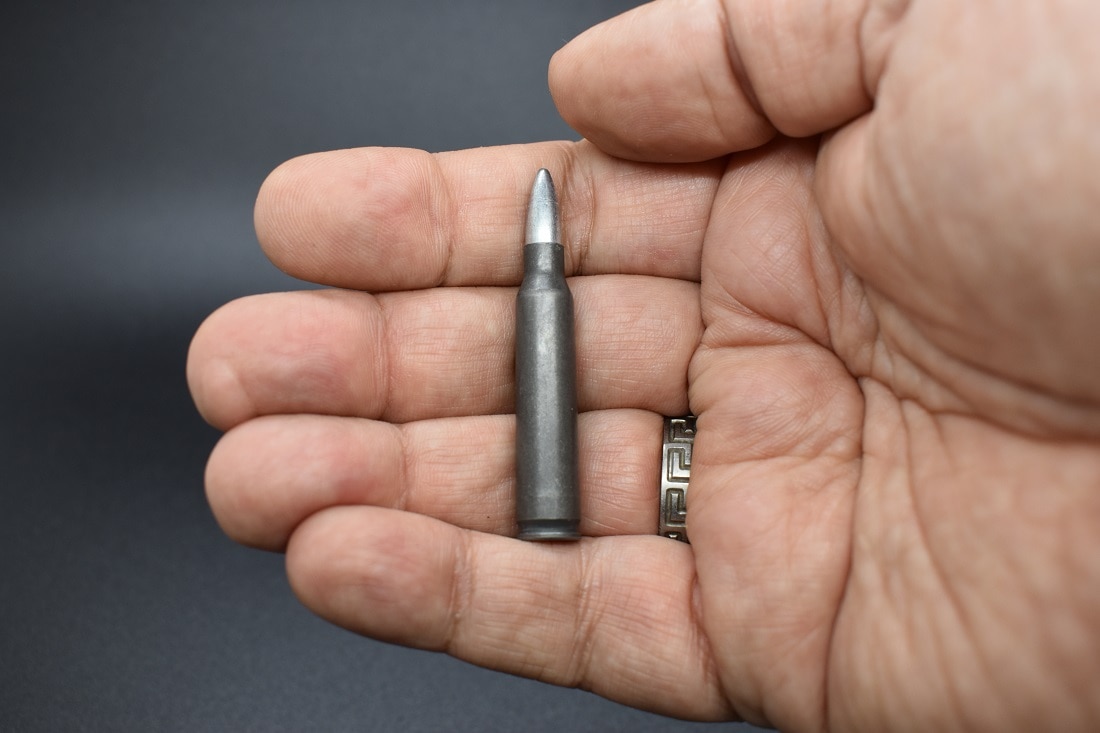A simple step that is often missed in the act of care and maintaining semi-automatic firearms such as the AR-15 is to spend a minute keeping the magazines up to snuff.
Why bother?
With any semi-auto rifle or pistol, one of the primary causes of jams and feeding issues encountered is often attributed to bad, worn, or poor magazines. Not only will a properly cleaned and maintained magazine perform better and last longer, but it speaks to the mindset of the gun’s owner. Most importantly, it gives an opportunity to spot something starting to go wrong before it has a chance to go all the way wrong.
When it comes to AR-15 mags, the two most commonly encountered as Magpul PMAGs and aluminum military-style mags. Most firearm manufacturers provide one or the other, often branded with their logos, with their AR platforms. We aren’t here to argue which is better, as each had their fan clubs, and then a Lancer or Amend2 guy comes in and things get awkward.
Without further…
Stay Safe
As with all gun maintenance, even going back to flintlock muzzleloaders, be sure you are working on an unloaded firearm in an area where you are reasonably assured you aren’t going to lose parts. To be sure you have all the ammunition accounted for, inventory the number of rounds you remove and account for any that are missing. Remove all brass and ammo from the room in which you are cleaning the mag to ensure it doesn’t somehow wander its way back into a cylinder before you are ready. Sure, “it’s only a mag” but odds are that if you are cleaning a mag, you are probably cleaning a gun as well.
Next, visually ensure that there is no brass or ammo in the area you are cleaning the mag. Be sure to do your maintenance in a reasonably clean clear that is well-ventilated and away from distractions and little wandering animals or humans.
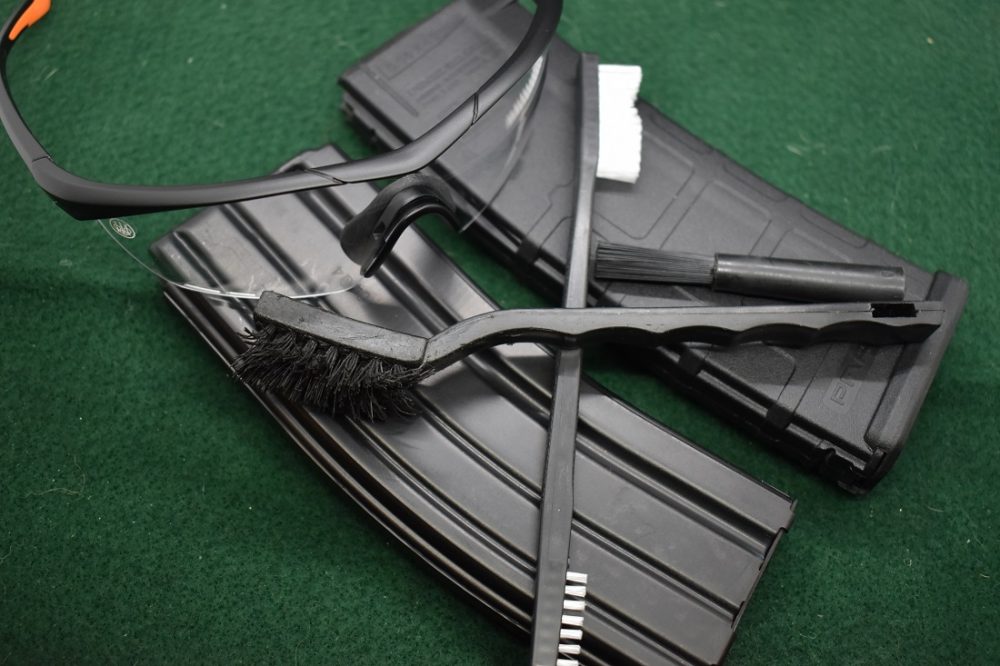
A cleaning mat with a non-slip and solvent resistant pad is a good idea but not absolutely required. As you have a spring and the prospect of flying debris, investing in safety glasses are a smart way to stay clear of investing in eye patches.
Cleaning a Magpul PMAG
Besides the cool rubber magazine pulls that earned the company their name and their early Chris Costa/Travis Haley DVDs, Magpul’s first great product was the polymer PMAG. Reliable with an anti-tilt self-leveling follower that tends to keep all your rounds pointed in the right direction, it also takes down easily for cleaning.
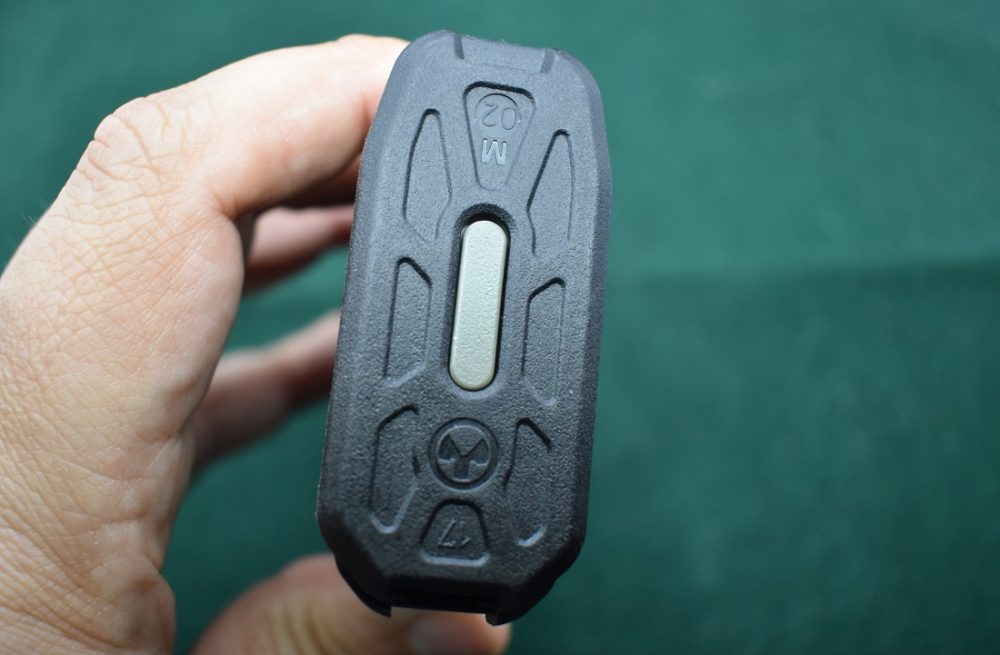
Just flip the empty mag bottom-side up and look for the button at the middle of the bottom of the plate.
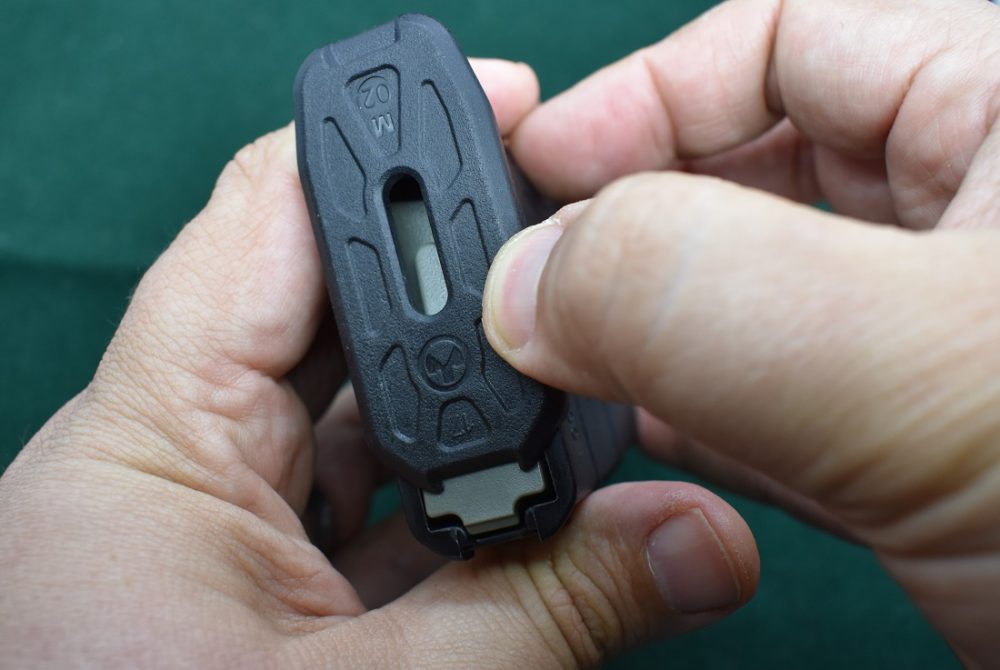
Apply booger pad to said button and depress while pushing the plate forward slightly, then remove the plate, being careful to not let the spring– which is under tension– go flying like a peanut snake gag from the 80s.
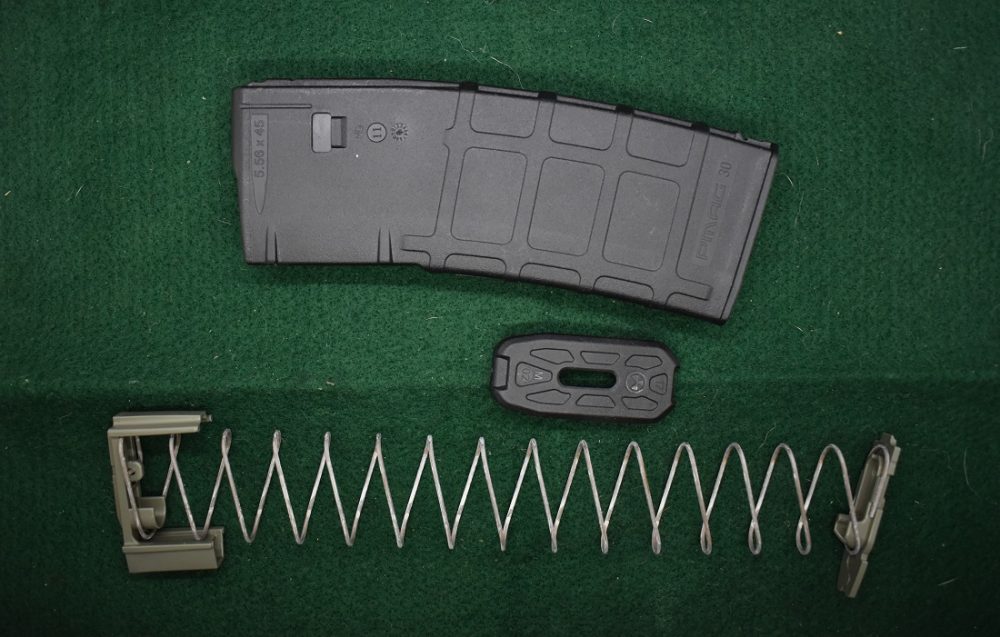
Check the spring and follower for schmutz, gravel, Cheeto dust, or moon rocks. Wipe and brush off any found. A bit of canned or forced air can help make sure you are good to go. Run your finger over the spring slowly, looking and feeling for breaks or splits. If you find any, stop, push the mag guts in a box, and get thyself a new magazine spring. Don’t worry, they are like $4 and include a new follower as well.
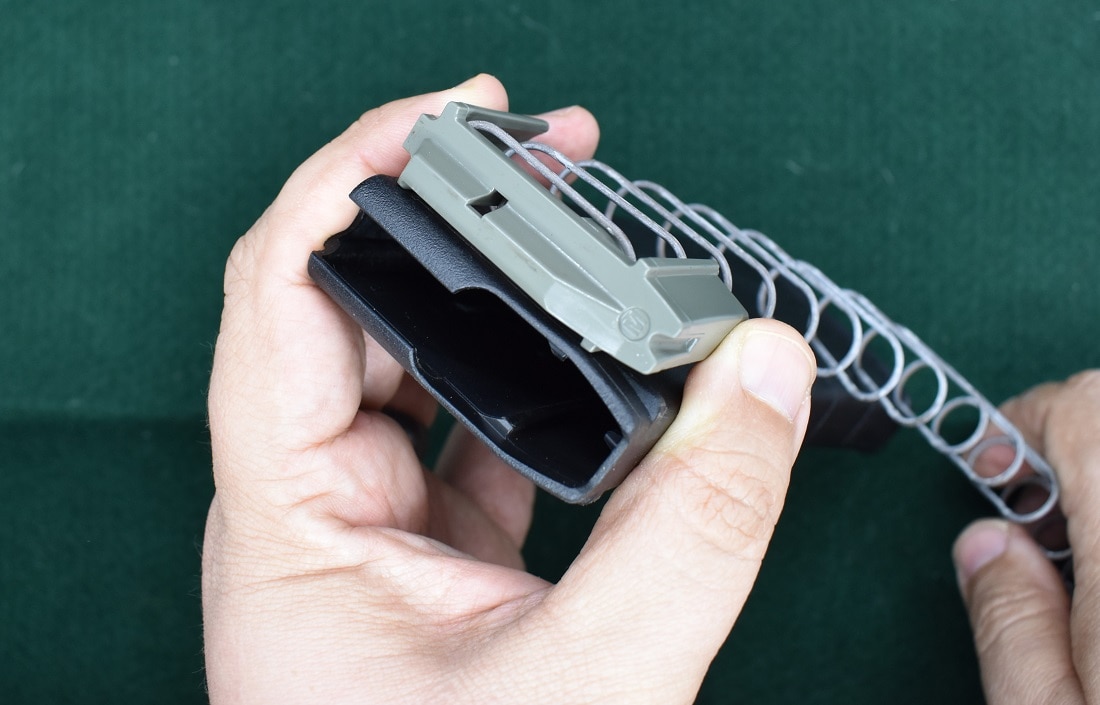
Next, check the magazine’s feed lips, which should be uniform and straight on both sides with no chips or bends. Similarly, the follower should be in one piece and match the feed lips without missing portions or having significant gaps.
Next, reassemble the PMAG in reverse order. DO NOT use any lube as it is A) not needed and B) will turn into quicksand for dirt and debris to get sucked into the mag in the future. For reference, the milky white stuff on Magpul mag springs is a dry silicone lube that has already been applied at the factory, or at least that’s what they led me to believe.
Now, how about…
Cleaning a GI Mag
Eugene Stoner envisioned a pre-loaded disposable aluminum “waffle” mag in his 1955-era AR-10 and, while the AR-15 made a lot of changes to his initial designs, a now very much reusable aluminum mag remained and today, after a series of evolutions, is still around as the STANAG mag which is suitable for the whole gamut of AR15/M4 platforms.
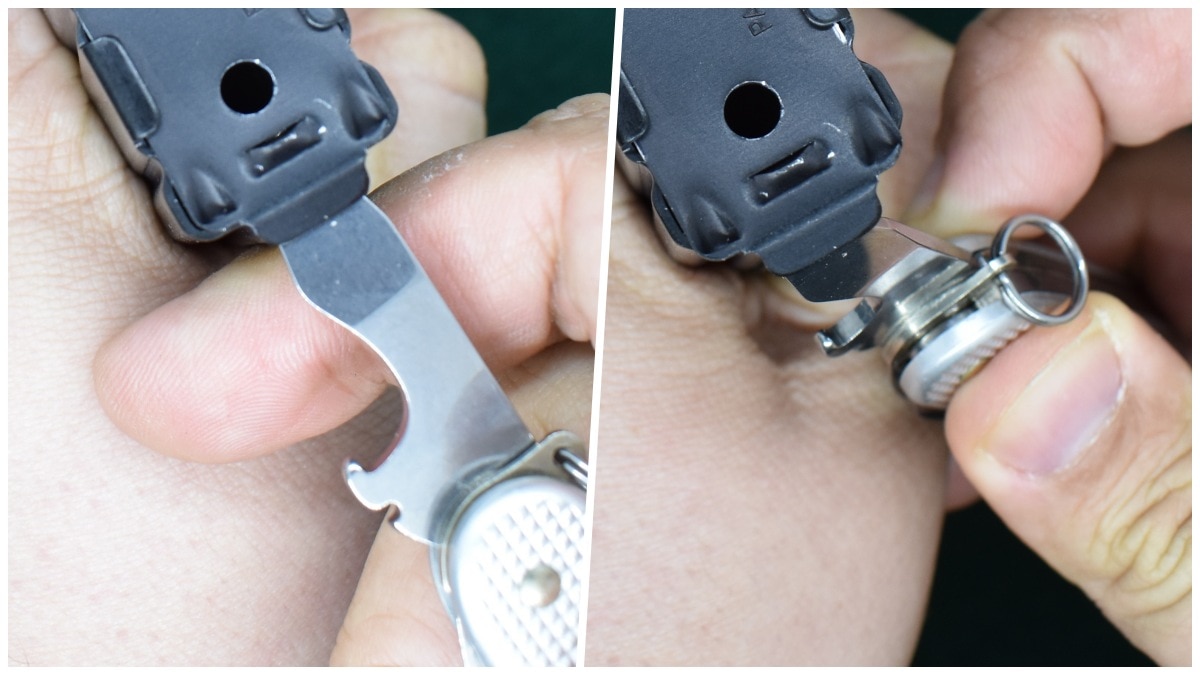
Old-school logic was to insert a cartridge point into the hole in the GI mag’s floor plate to release it, then slide the plate forward. However, you can also take something like the trusty flathead screwdriver of a SAK and lift the tab of the floorplate very slightly, then pull it towards you.
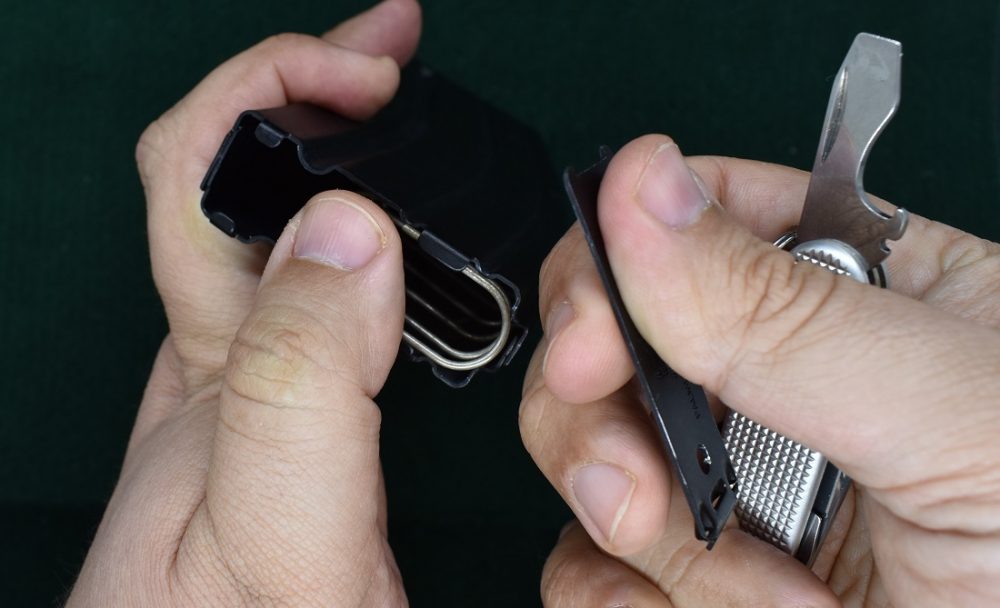
Once you have the floorplate off, ease the mag spring and follower out of the mag body. You may have to wiggle it back and forth to do so. Don’t yank the follower out as it can separate from the spring.
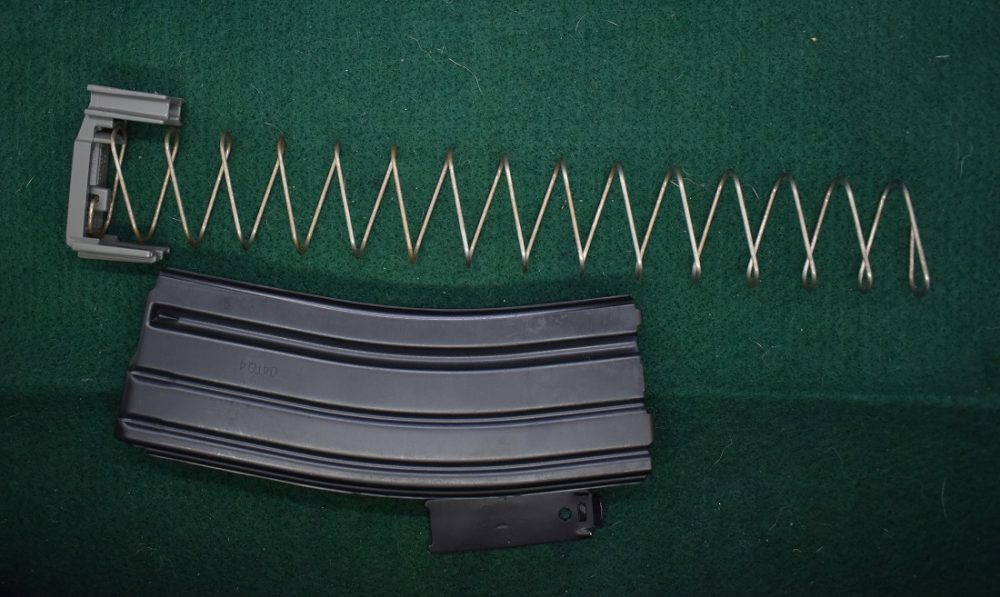
Like with the PMAG, once disassembled, remove any cookie crumbs, dog hair, turf, or pine straw. Check the spring for any breaks or splits. If you find any, put the operation on hold until you can get a new spring, which is easily obtainable. It may be a good idea to stock up on said replacement parts just in case they get hard to find one day, just saying.

Check the feed lips to make sure they are straight and that the follower is matching and good to go.
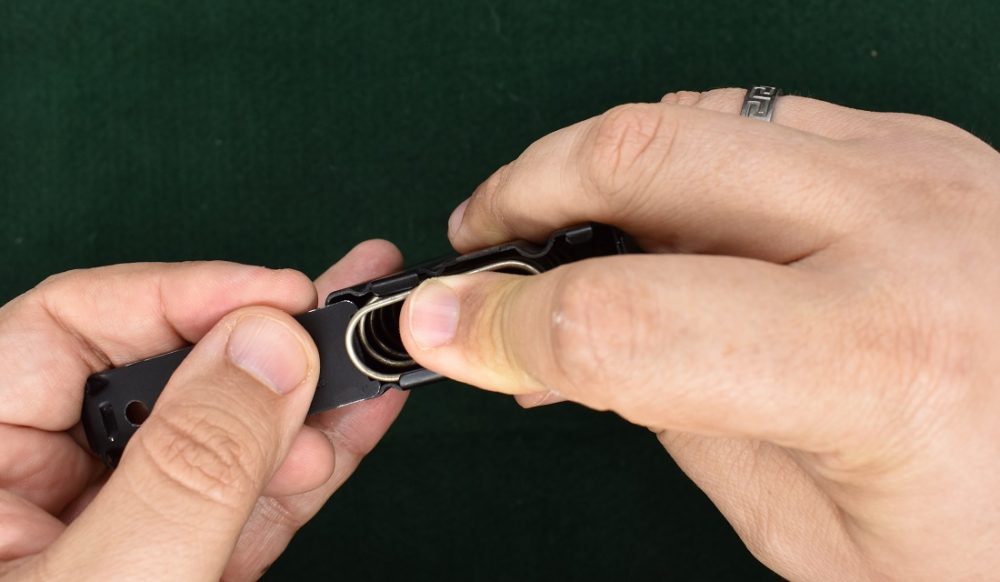
Reassemble in reverse, being careful about the spring, and make sure the floor plate goes under all four tabs. Three out of four can be a pain to fix.
DO NOT use any lube as it is A) not needed and B) will turn into quicksand for dirt and debris to get sucked into the mag in the future. Some will disagree on this on GI mags, such as the Army’s PM Magazine which says to apply lube to the spring– except in the desert– but as with anything it a personal preference. As it is a metal mag, old-school guidance was also to put a “very-very-very light coat of lube– using a rag dampened with LSA” on the inside of the mag’s walls. However, the old-school Army also used to have a lot of jams on their M16s, so…
Tip: Consider marking, numbering, or painting the outside of your mags’ body to be able to differentiate them from each other. This can help keep your mags from getting confused on the range with those that belong to others while enabling you to better track a mag that is performing subpar and may need to be pulled from rotation until it can be addressed. Most malfunctioning mags can be saved with a tweak of the feed lips, cleaning and/or replacing the internals.
Since you came this far, how about a vintage comic on how to clean “Maggie” from the Army’s Vietnam-era PM comic on keeping the M16 running from back when the straight 20-round Colt mag was standard?

Oh, Maggie…
GRAB SOME AR MAGS WHILE YOU CAN!
The post How to Clean AR-15 Magazines: A Quick and Easy Guide appeared first on Guns.com.
Powered by WPeMatico

